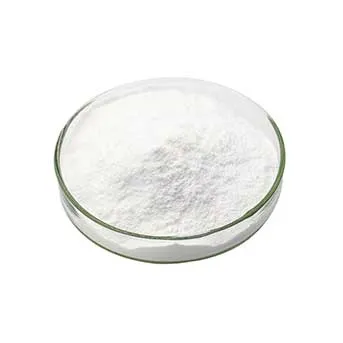
Advanced Azole Fungicides for Agricultural Disease Control
- The Growing Role of Azole Fungicides in Crop Protection
- Technical Mechanism and Advantages of Systemic Action
- Leading Azole Formulations: Manufacturer Comparison
- Custom Application Strategies for Different Crops
- Efficacy Data from Field Application Studies
- Environmental Considerations and Resistance Management
- Future Prospects for Azole Fungicides in Agriculture

(azole fungicides in agriculture)
The Growing Role of Azole Fungicides in Modern Crop Protection
Agricultural systems increasingly rely on azole fungicides as frontline defenses against destructive fungal pathogens. Representing approximately 25% of the global agricultural fungicide market, these compounds have become indispensable in protecting staple crops that feed billions. The widespread adoption stems from their cost-effectiveness and broad-spectrum activity against economically devastating diseases like rusts, powdery mildew, and fusarium head blight. Recent studies indicate that without azole treatments, global wheat production could decrease by 15-20% annually due to unchecked fungal infections, threatening food security across vulnerable regions.
Technical Mechanism and Advantages of Systemic Action
Azoles inhibit fungal ergosterol biosynthesis through targeted disruption of the CYP51 enzyme, a critical component of cell membrane development. This unique mode of action enables azole systemic fungicide products to distribute translaminarly and acropetally within plant tissues, reaching protected infection sites unreachable by contact agents. Compared to older protectant fungicides, systemic azoles deliver:
- Longer residual activity (typically 14-21 days)
- Curative effects within 48 hours of infection
- Lower application frequencies (40% reduction in seasonal sprays)
- Multi-site disease prevention in complex pathogen environments
Leading Azole Formulations: Comparative Analysis
| Active Ingredient | Manufacturer | Target Diseases | Application Rate (L/ha) | Pre-Harvest Interval |
|---|---|---|---|---|
| Tebuconazole | Bayer | Septoria, Rusts | 0.5-1.0 | 30 days |
| Epoxiconazole | BASF | Powdery Mildew | 0.3-0.75 | 45 days |
| Propiconazole | Syngenta | Fusarium, Leaf Spot | 0.3-1.0 | 60 days |
| Difenoconazole | Corteva | Blights, Scab | 0.1-0.5 | 35 days |
Custom Application Strategies for Different Crops
Crop-specific application protocols maximize azole efficacy while minimizing resistance development. Wheat benefits from T1 applications at stem extension (GS30-32) targeting early mycosphaerella infections, followed by T3 sprays during flowering to suppress fusarium. In permanent crops like vineyards, split applications of difenoconazole at bud burst and pre-bunch closure deliver 92% control of black rot. Fruit producers employ azole systemic fungicide rotations with SDHI compounds during critical phenological stages:
- Orchards: Petal fall through fruit sizing at 14-day intervals
- Vegetables: Drench applications at transplanting for root protection
- Rice: Seed treatment combinations with strobilurins
Efficacy Data from Field Application Studies
Multi-year field trials across European cereal farms demonstrate consistent yield protection from optimized azole programs. Tebuconazole applications reduced septoria incidence by 78% compared to untreated controls, preserving average yields of 8.5 tonnes/hectare versus 5.2 tonnes in unprotected fields. North American corn trials showed propiconazole-based treatments increased marketable yield by 2.4 tonnes/hectare despite high gibberella pressure. Economic analyses reveal that every $1 invested in timely azole applications returns $3-5 in protected yield value across major field crops. Resistance monitoring programs confirm that managed alternation with multisite inhibitors maintains field efficacy above 90% in most production regions.
Environmental Considerations and Resistance Management
Modern formulations feature improved ecotoxicological profiles, with recent products showing 98% reduction in acute toxicity to aquatic organisms versus early-generation azoles. Best management practices advocate:
- Resistance Risk Index monitoring for early detection shifts
- Mandatory mixing partners in high-resistance areas
- Precision application technologies reducing drift by 70%
- Buffer zone implementation adjacent to sensitive habitats
Ongoing stewardship initiatives promote FRAC guidelines limiting seasonal applications to 2-3 cycles depending on regional resistance pressure. Digital decision support tools now incorporate pathogen sensitivity databases to generate field-specific treatment recommendations.
Future Prospects for Azole Fungicides in Agriculture
Innovations in azole fungicides continue to address evolving agricultural challenges. Pipeline developments include:
- Enhanced stereoisomer formulations improving efficacy rates by 15-25%
- Biological synergists reducing conventional application rates
- Climate-resilient formulations maintaining stability above 40°C
- Precision delivery systems using nanoparticle encapsulation
Despite emerging alternatives, the versatility and cost-efficiency of azole chemistries ensure their continued dominance, projected to retain 20-25% market share through 2030. Research investments continue to enhance selectivity and degradation profiles, ensuring azole fungicides in agriculture
remain indispensable tools for sustainable intensification. Ongoing field validations demonstrate 5-10% annual improvements in disease control efficiency through integrated management approaches that synergize chemical and cultural controls.

(azole fungicides in agriculture)
FAQS on azole fungicides in agriculture
Q: What are azole fungicides in agriculture?
A: Azole fungicides are synthetic antifungal agents used in agriculture to combat fungal diseases in crops. They work by inhibiting fungal enzyme activity, effectively controlling pathogens like rusts and mildews. These chemicals enhance crop yield and quality.
Q: How do azole systemic fungicides function?
A: Azole systemic fungicides are absorbed by plants and translocated internally. They provide long-lasting protection against fungal infections from within. This systemic action makes them efficient for treating hard-to-reach areas.
Q: What are common applications of azole fungicides?
A: Farmers apply azole fungicides as foliar sprays or seed treatments on crops such as cereals, fruits, and vegetables. This targets diseases like powdery mildew and ensures broad-spectrum control. Proper timing minimizes resistance risks.
Q: What benefits do azole fungicides offer for sustainable farming?
A: They offer cost-effective and rapid disease management, boosting productivity. Azole fungicides support integrated pest management (IPM) strategies. However, rotation with other fungicides is advised to prevent resistance.
Q: Are there environmental concerns with azole fungicides?
A: Potential concerns include soil persistence and impacts on beneficial organisms like bees. Regulatory guidelines promote safe usage and residue monitoring. Farmers follow best practices to mitigate risks.
-
Uncover the Benefits of Sodium ChlorateNewsJun.24,2025
-
Sodium for Sale: Your Essential ResourceNewsJun.24,2025
-
Raw Materials in Chemical IndustryNewsJun.24,2025
-
Potassium Hydroxide: Versatile Solutions for Your NeedsNewsJun.24,2025
-
Organic Pesticides and Chemical Raw Materials: Building a Sustainable FutureNewsJun.24,2025
-
Discover Premium Chlorine Tablets TodayNewsJun.24,2025
-
Zinc for Sale: Your Essential ResourceNewsJun.04,2025




















